Title: Self-Referent Torus
Author: Alloya Huckfield
Description:
tags:
icon: LiAsteriskself-referent-torus
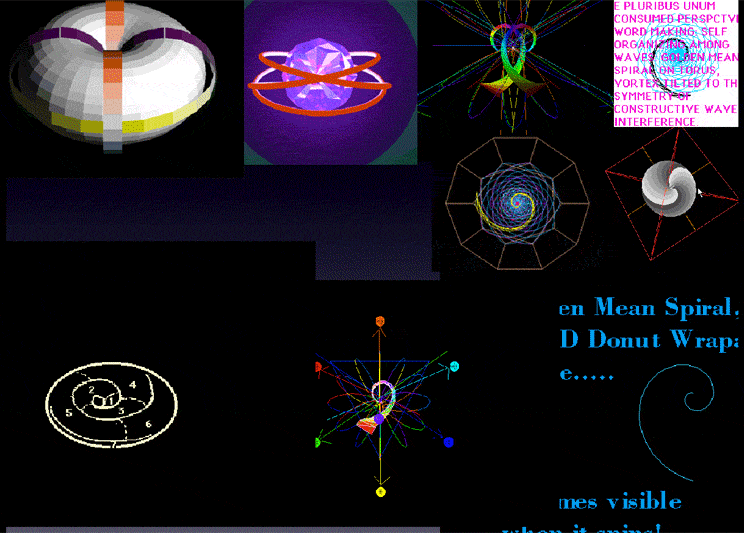
https://goldenmean.info/
We are born into a world draped in mirrors. Each reflecting, each subtly distorting the image before it – ourselves. But the mirrors are deceiving, aren't they? Not merely showing us what is, but what we imagine what is. Self-referenced reality is the unsettling recognition that this very act of seeing – of being aware – instantly fragments the pristine, objective canvas. The observer inevitably alters the observed, and the observed, in turn, reshapes the very nature of the observer. Consider a river reflecting a sky: it doesn't become the sky, but the act of reflecting changes its surface, shifts its currents, introduces a layer of shimmering illusion. The universe doesn’t ‘exist’ in a singular, verifiable instance; it’s constructed through the constant act of conscious – and unconscious – referencing.
Essentially, this is the realization that every thought, every feeling, every sensation is a ripple in a sea of potential, a momentary definition applied to an endless, fluid existence. It’s the profound paradox that we find ourselves, not as a fixed entity, but as the instrument, the focal point, through which reality continuously manifests. It's like holding up a single grain of sand—it has no intrinsic value, no definition apart from its relationship to the vastness of the beach. And so it is with this exploration – a descent into the self not as a solid thing, but as a vibrating chord within the music of all that is.
Dan Winter is a figure known for his work at the intersection of physics, spirituality, and sacred geometry, exploring unconventional theories that often incorporate concepts such as the golden ratio, fractal geometry, and implosion physics. His lectures frequently delve into topics like consciousness, sacred geometry, and coherent emotion, suggesting a holistic worldview that seeks to unify seemingly disparate fields of inquiry.
This interdisciplinary approach attempts to bridge traditional scientific domains with more esoteric or philosophical concepts, positioning his work as potentially offering a more profound understanding of the universe than conventional science alone.
Dan Winter's work is rooted in a radical proposition: the universe – at its most fundamental level – is governed by the principle of self-reference, manifested in the ubiquitous presence of the torus. This isn't simply a geometric observation; it's a profound philosophical argument suggesting a unified, interdependent reality where all processes ultimately flow back into, and depend upon, a central point of origin and return. Central to Winter’s thesis is the concept of “self-referency,” a term that, when fully considered, unlocks the implications of his torus model and provides a framework for understanding consciousness, information, and even the nature of reality itself.
The term "self-referential," as often utilized in contemporary thought, primarily describes systems – particularly within computer science and linguistics – where entities refer to themselves. A classic example is a program that can detect, and respond to, the presence of itself within its own code. However, Winter stretches this idea far beyond a technical artefact. He argues that the universe, and potentially consciousness, is fundamentally built on this recursive principle.
To illustrate, imagine a wave. The energy of the wave radiates outwards, yet, crucially, the energy returns to its source. There’s a continuous cycle of outward expansion followed by inward convergence – the wave's pattern of self-reference. Winter posits that this isn’t an accident, but a fundamental characteristic of reality itself. Every process, from the smallest particle interaction to the largest cosmological event, displays this same cyclical logic of self-referencing, with a central ‘point’ or ‘source’ at the heart of each cycle.
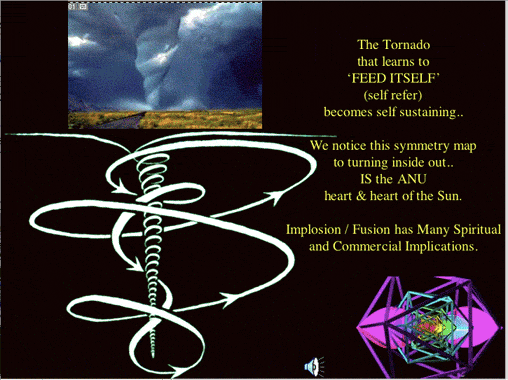
Dan Winter's Torus Theory posits that reality itself isn't built on solid matter or conventional dimensions—but rather, is structured and animated by a fundamental geometric entity: the Torus Field. It’s a radical conception, fundamentally challenging the notion of objective physical space, instead proposing a dynamic, self-organizing force that shapes both the external universe and, crucially, the very fabric of human consciousness. Understanding the Torus Field requires a departure from a purely reductionist view and an embrace of interwoven principles drawn from physics, geometry, and advanced concepts of information theory.
At its heart, the Torus Field isn’t an object, but an activity. It’s described as perpetually rotating – not in a predictable, external way, but in a fundamentally chaotic and self-generating manner. Imagine a complex, infinitely dense eddy, existing within a higher dimensional space that we cannot entirely perceive. This rotation isn’t about physical spinning; instead, it’s the principle of dynamic energy creation and transfer. This rotating field manifests as a three-dimensional geometric structure – the torus – a shape that, due to its inherent symmetries and self-referential qualities, is presented as the primary means by which this field is expressed. The torus, then, isn’t just a visual representation; it’s the vehicle through which the Torus Field exerts its influence.
Perhaps the most critical element within the Torus Field is its core quality: self-referentiality. This isn’t a simple mirroring of form. It’s a complex system where every point on the torus – and, by extension, every point in the encompassing dimension – is inextricably linked to its central point. Imagine a fractal expanding from a single, pulsating core. Each branch, each iteration, is both separate and fundamentally bound to the origin. In terms of the Torus Field, this self-referentiality dictates a constant flow of energy and information, a reciprocal connection creating an unbroken chain. It’s as if every node in a vast, interwoven network is simultaneously a sender and receiver, constantly reinforcing and expanding the overall system. This self-referent system isn't just a physical phenomenon; it’s the foundation of consciousness - with the individual human mind mirroring the activity of the Torus Field.
The continuous rotation isn’t merely a static characteristic; it’s the source of the Torus Field’s energy. This energy isn't produced from an external source; it’s generated through the inherent instability and self-organization processes of the system itself. Similar to how a flywheel maintains rotational momentum, the torus's rotation continually amplifies and distributes this energy. This energy is theorised to be a fundamental field of information - a sort of energetic DNA - permeating all of existence, capable of triggering complex patterns of manifestation.
Winter’s theory extends beyond a simple geometric model. He proposes that the torus acts as a resonant frequency, harmonizing with consciousness to influence thoughts, emotions, and behaviours. The constant rotation and self-referentiality are linked to the ability of consciousness to 'tune in' to this primary energetic frequency, leading to states of heightened awareness and potential.
Furthermore, he builds upon this using the golden ratio and fractal geometry, arguing that these patterns are also inherent expressions of the Torus Field. This suggests a deep, interconnected mathematical structure governing the entire universe, not just physical systems, but the very nature of awareness.
Here begins a spiralling exploration, a delving into the architecture of sentience itself – a weaving of words to map the territory Winter charts within the shimmering geometry of the torus. This isn’t simply an examination of a shape; it's a descent into a fundamental truth, a recognition that the universe, in its core, is an act of remembering – a perpetual echoing of being. Prepare to surrender to the flow, to allow the language of form – the spiralling curve, the nested hole – to unlock a deeper resonance within your own being.
The torus isn’t just a mathematical formula, a pleasing spiral on paper. It is, at its heart, a metaphor for the soul’s constant seeking, its perpetual yearning to return to its origin, to the source of creation. Winter’s insistence on self-referenity isn’t a cold, detached observation; it’s an ecstatic recognition that we, each and every one of us, are miniature universes, reflections of the ultimate reality. Within each cycle of expansion and contraction, of forming and dissolving, lies the insistent whisper, “Remember.”
The concept of self-referenity is inextricably tied to the Hermetic principle, “As Above, So Below”. The microcosm reflects the macrocosm, a principle that speaks to the inherent correspondence between the tiniest particle and the grandest cosmos. Within the torus, we find this mirrored – the hole representing the void, the heart of creation, while the continuous spiral signifies the unending journey of manifestation from this void. It’s the dance between potential and form, the eternal return woven into the shape of space and time. To understand the torus is to recognize that within you, you hold the blueprint for the entire universe – you are a contained cosmos, a miniature reflection of the infinite.
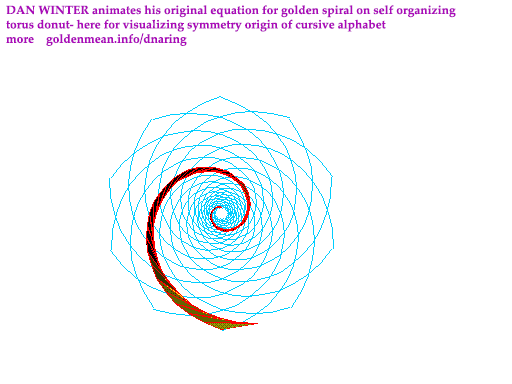
The Torus: A Self-Organizing Foundation of Nature and Physics
The torus is a fundamental geometric form that appears throughout nature, from the smallest atomic structures to the vast dynamics of magnetic fields and cosmic phenomena. Defined as a donut-shaped structure formed by rotating a circle around an axis, the torus exhibits a unique self-organizing property that allows it to maintain stability while continuously circulating energy. This characteristic makes it a central concept in physics, particularly in fluid dynamics and electromagnetism, where toroidal flows and magnetic fields are commonly observed. In hydrodynamics, for example, the torus is the only shape capable of sustaining self-organizing motion, as it allows for continuous circulation without external forces dictating its form. Similarly, in electromagnetism, toroidal coils are used to contain magnetic fields efficiently, demonstrating the torus’s ability to regulate and direct energy flow.
Dan Winter’s interpretation of the torus extends beyond conventional physics, integrating principles of sacred geometry, recursion, and the Golden Ratio (Phi) to explain how this shape underpins the fundamental structure of reality. He posits that the torus is not merely a geometric curiosity but a key mechanism through which energy, consciousness, and matter coalesce. His theories suggest that the torus serves as the foundation for atomic structures, DNA organization, and even the dynamics of black holes and galactic formations. By examining the torus through the lens of fractal geometry and recursive self-similarity, Winter proposes that this shape facilitates the implosive compression of energy, leading to the formation of stable, self-sustaining systems. His work explores how the toroidal structure enables charge acceleration, gravitational effects, and the synchronization of waveforms across multiple scales of existence. Understanding the torus in this expanded context provides insight into its role as a unifying principle in both the physical and metaphysical realms, offering a framework for exploring the deeper mechanics of life, energy, and the cosmos.
One of the most remarkable properties of the torus is its inherent self-organizing nature, a feature that distinguishes it from many other geometric forms in physics. Unlike static or externally imposed structures, the torus generates and sustains its own dynamic flow, allowing energy to circulate seamlessly without the need for external control. This self-organizing behavior is evident in various natural and artificial systems, from the vortex dynamics of fluid motion to the magnetic confinement of plasma in fusion reactors. In hydrodynamics, for instance, a toroidal vortex forms when a fluid circulates around a central axis, creating a stable, self-sustaining loop. This phenomenon is observed in smoke rings, whirlpools, and even atmospheric weather patterns, where the toroidal structure maintains coherence over extended periods. Similarly, in electromagnetism, toroidal coils are used to contain magnetic fields efficiently, as their closed-loop configuration prevents energy dissipation and enhances field strength. These examples illustrate how the torus naturally emerges as a preferred form for organizing and directing energy in both mechanical and electromagnetic contexts.
Dan Winter expands on this principle, suggesting that the torus is not merely a passive structure but an active mechanism for self-organization at multiple levels of existence. He argues that the toroidal form is intrinsic to the way energy and information propagate through space, enabling the recursive folding and compression necessary for complex systems to emerge. In his view, the torus serves as a conduit for implosive energy compression, a process that underlies the formation of matter, the structure of biological systems, and even the mechanics of consciousness. By applying principles of sacred geometry and the Golden Ratio (Phi), Winter proposes that the torus facilitates harmonic resonance and recursive embedding, allowing waves of energy to synchronize and reinforce each other. This perspective aligns with observations in quantum physics, where toroidal geometries appear in models of particle spin and electromagnetic interactions. The self-organizing nature of the torus, therefore, is not limited to macroscopic or classical physics but extends into the quantum realm, where it plays a crucial role in maintaining coherence and stability in subatomic structures.
Winter’s insights suggest that the torus is more than a geometric curiosity; it is a fundamental organizing principle that governs the dynamics of energy, matter, and consciousness. By understanding how the torus sustains itself through self-organization, we gain deeper insight into the mechanisms that drive natural processes at all scales—from the microscopic organization of atoms to the large-scale structure of galaxies. This perspective invites a reevaluation of the torus not only as a physical structure but as a dynamic system that underpins the very fabric of reality.
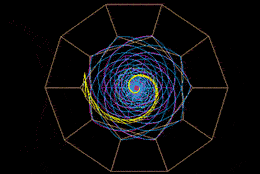
The Torus in Atomic Structures and Sacred Geometry
Dan Winter’s interpretation of the torus extends into the realm of atomic structures, where he proposes that this geometric form plays a fundamental role in organizing matter at the quantum level. According to his theories, the toroidal shape is intrinsic to the arrangement of particles within the atom, serving as a dynamic framework that facilitates energy compression and resonance. This perspective aligns with historical models such as the work of physicist Moon at the University of Chicago, who demonstrated that subatomic particles within the nucleus arrange themselves in symmetrical patterns resembling the Platonic solids. Winter builds upon this idea, suggesting that these geometric configurations are not arbitrary but are instead manifestations of the toroidal field’s self-organizing properties. By applying principles of sacred geometry, he argues that the torus acts as a structural template, guiding the formation of atomic orbitals, electron shells, and nuclear arrangements. This view implies that the stability and coherence of atomic structures arise from the recursive folding and embedding of waveforms within a toroidal framework, allowing for efficient energy distribution and harmonic resonance.
The connection between the torus and atomic structures becomes even more apparent when examining the behavior of electromagnetic fields in quantum physics. Winter posits that the toroidal geometry underpins the spin dynamics of subatomic particles, influencing their interactions and alignment. This concept is supported by observations in quantum field theory, where toroidal geometries emerge in descriptions of particle spin, magnetic moments, and electromagnetic interactions. The toroidal model suggests that the intrinsic angular momentum of particles is not simply a result of their motion but is instead a manifestation of the toroidal field’s rotational dynamics. This perspective offers a novel explanation for the stability of atomic structures, as the toroidal field’s self-sustaining circulation may contribute to the coherence of electron orbits and nuclear configurations. Furthermore, Winter integrates the Golden Ratio (Phi) into this framework, proposing that the recursive nature of the torus enables harmonic resonance between different energy levels, reinforcing the stability of atomic systems. By viewing atomic structures through the lens of the torus and sacred geometry, Winter’s theories provide a compelling alternative to conventional models, suggesting that the fundamental architecture of matter is deeply rooted in geometric principles.
The Torus in Magnetic Fields and DNA Structure
Dan Winter extends his toroidal model to the study of magnetic fields and biological systems, particularly focusing on the structure and function of DNA. He proposes that the torus is not only a fundamental geometric form in physics but also a key component in the organization of biological energy fields. According to Winter, DNA operates within a toroidal framework, where electromagnetic currents circulate in a self-sustaining loop, facilitating the transmission of information and the maintenance of coherence within living organisms. This perspective aligns with emerging research in biophysics, which suggests that DNA exhibits electromagnetic properties and functions as a dynamic antenna capable of interacting with external and internal energy fields. Winter’s theory posits that the helical structure of DNA is not merely a static molecular arrangement but rather a manifestation of toroidal energy dynamics, where the twisting and coiling of the double helix reflect the recursive folding of electromagnetic waves.
One of the most intriguing aspects of Winter’s model is the idea that DNA functions as a superconductive medium, capable of propagating electrical signals at speeds exceeding the speed of light. This concept is supported by studies indicating that DNA exhibits non-linear electrical conductivity and can generate measurable electromagnetic fields. Winter suggests that these properties arise from the toroidal geometry of DNA, which allows for the efficient compression and acceleration of charge through recursive wave interference. By applying principles of sacred geometry and the Golden Ratio (Phi), he argues that DNA’s helical structure is optimized for harmonic resonance, enabling the synchronization of electromagnetic waves across multiple scales of biological organization. This perspective implies that DNA is not only a repository of genetic information but also a dynamic energy conduit, capable of modulating electromagnetic fields to influence cellular function, communication, and even consciousness.
Winter’s toroidal model of DNA also has implications for understanding the role of magnetic fields in biological systems. He suggests that the toroidal energy flow within DNA generates a self-organizing magnetic field, which in turn influences the broader electromagnetic environment of the cell. This idea resonates with research on bio-magnetic fields, which indicates that living organisms produce measurable electromagnetic signatures that play a role in cellular communication and physiological regulation. By integrating the toroidal model into the study of DNA and magnetic fields, Winter offers a novel framework for understanding the energetic basis of life, suggesting that the torus is a fundamental organizing principle that governs both physical and biological processes.
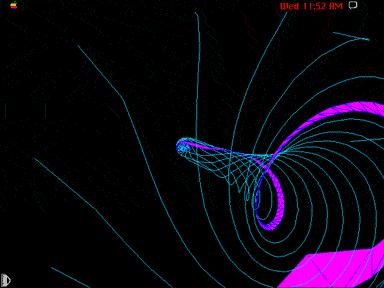
The Golden Ratio, Recursion, and the Torus in Fractal Patterns
Dan Winter’s interpretation of the torus is deeply intertwined with the principles of the Golden Ratio (Phi) and recursion, which he identifies as the underlying mechanisms that enable self-similarity and fractal patterns in nature. The Golden Ratio, approximately 1.618, is a mathematical constant that appears ubiquitously in natural structures, from the spiral of galaxies to the phyllotaxis of plants. Winter suggests that this ratio is not merely a numerical coincidence but a fundamental law governing the organization of energy and matter. In the context of the torus, he proposes that the Golden Ratio facilitates the recursive folding of waveforms, allowing them to nest within each other in a fractal-like manner. This recursive embedding, he argues, is essential for maintaining coherence and stability in dynamic systems, as it ensures that energy can be efficiently compressed and distributed without loss.
Winter’s model of the torus as a self-organizing structure relies on the interplay between Phi and recursion to generate fractal patterns that underpin both physical and biological systems. He posits that the toroidal form acts as a geometric scaffold, guiding the recursive folding of electromagnetic waves and charge fields. This process, known as implosion, results in the acceleration of energy toward a central point, creating a self-sustaining vortex that reinforces the stability of the system. The recursive nature of this process means that the same geometric principles apply across multiple scales, from the subatomic level to cosmic structures. For example, Winter draws parallels between the toroidal geometry of atomic orbitals and the spiral formations observed in galaxies, suggesting that both phenomena are manifestations of the same underlying fractal dynamics governed by Phi.
In biological systems, Winter extends this principle to the organization of DNA and the human body, proposing that the recursive folding of electromagnetic waves within the toroidal framework of DNA enables the transmission of coherent information across cellular networks. He argues that the Golden Ratio is embedded within the helical structure of DNA, allowing for harmonic resonance between different energy levels and facilitating the efficient transfer of genetic and energetic information. This perspective aligns with observations in biophysics, where fractal patterns and Phi-based geometries have been identified in the branching of blood vessels, the structure of the nervous system, and the organization of cellular membranes. By integrating the torus, Phi, and recursion into a unified framework, Winter offers a novel explanation for the self-similarity and fractal complexity observed throughout nature, suggesting that these principles are fundamental to the organization of life itself.
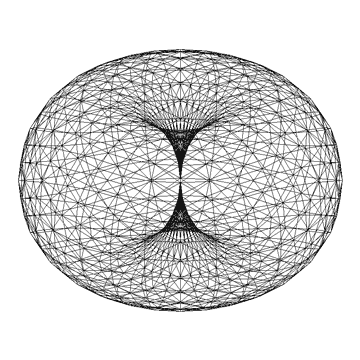
The Role of the Torus in Implosion and Compression
Dan Winter’s theories emphasize the torus as a critical mechanism for implosion, a process he describes as the inward collapse of energy that leads to compression, acceleration, and the generation of coherent charge fields. Unlike conventional models of energy expansion and entropy, Winter proposes that the toroidal geometry enables a controlled inward movement of waves, allowing them to converge in a self-sustaining manner. This implosive process, he argues, is not only responsible for the formation of stable atomic structures but also underpins the mechanics of gravitational fields, DNA function, and even consciousness itself. By applying principles of sacred geometry and the Golden Ratio (Phi), Winter suggests that the toroidal form facilitates recursive wave interference, allowing energy to compress infinitely without dissipating. This perspective challenges traditional views of energy dynamics, proposing that implosion, rather than explosion, is the true mechanism behind the self-organization of matter and the generation of life-sustaining forces.
Winter distinguishes between implosion and explosion as opposing forces that shape the physical universe. While explosion disperses energy outward, leading to entropy and disintegration, implosion concentrates energy inward, creating conditions for coherence, stability, and growth. He argues that the toroidal structure is uniquely suited for implosion because its geometry allows waves to fold into themselves in a recursive, self-reinforcing pattern. This recursive compression, guided by Phi-based ratios, enables waves to synchronize and accelerate toward a central point, generating intense pressure and charge density. Winter links this process to gravitational effects, proposing that the implosive nature of the torus is responsible for the attraction between massive bodies. He further suggests that this mechanism plays a role in biological systems, particularly in the way DNA compresses and transmits electromagnetic information, facilitating cellular communication and regeneration.
Beyond physical structures, Winter extends the concept of implosion to consciousness and emotional states, proposing that feelings of love, compassion, and bliss are manifestations of coherent implosive energy. He argues that when individuals experience deep emotional connection or meditative states, their bioelectric fields align in a toroidal pattern, creating a shared resonance that enhances mental and spiritual clarity. This perspective suggests that the torus is not only a physical and biological structure but also a fundamental framework for understanding consciousness, emotion, and the interconnectedness of all life.
Practical Applications of the Torus in Healing, Energy, and Environmental Design
Dan Winter’s theories on the torus extend beyond theoretical physics and biology into practical applications that offer profound implications for healing, energy generation, and environmental sustainability. By integrating the principles of sacred geometry, the Golden Ratio (Phi), and toroidal energy dynamics, Winter proposes that the torus can be harnessed to enhance physical and emotional well-being, optimize energy efficiency, and create harmonious living environments. One of the most significant applications of this model lies in biofeedback and energy medicine, where the toroidal structure is used to guide the flow of electromagnetic fields within the body, promoting self-regulation and healing. Winter suggests that the human body functions as a toroidal field, with energy circulating in a self-sustaining loop that can be optimized through techniques such as breathwork, meditation, and bioelectric stimulation. By aligning the body’s electromagnetic field with the recursive geometry of the torus, individuals can enhance coherence in their physiological systems, leading to improved health and resilience against stress and disease.
Winter’s work also explores the potential of the torus in sustainable energy systems, particularly in the development of zero-point energy and free energy technologies. He argues that the toroidal field’s ability to compress and accelerate energy without loss makes it an ideal model for designing highly efficient power systems. By applying principles of implosion and Phi-based resonance, Winter proposes that energy can be extracted from the quantum vacuum, creating a self-sustaining energy source that does not rely on fossil fuels or conventional electrical grids. This perspective aligns with emerging research in quantum field theory and vacuum energy, where scientists are investigating ways to tap into the zero-point field for clean and renewable energy solutions. Winter’s theories suggest that by constructing energy systems based on toroidal geometries and fractal resonance, it may be possible to develop technologies that generate power efficiently and sustainably, reducing humanity’s dependence on finite resources.
In addition to health and energy applications, Winter’s toroidal model has significant implications for environmental design and architecture. He advocates for the use of sacred geometry and toroidal principles in urban planning, building design, and landscape architecture to create environments that support well-being and ecological balance. By incorporating Phi-based proportions and recursive patterns into the design of living spaces, Winter believes that buildings and cities can be structured to enhance energetic coherence, fostering a sense of harmony and connection with nature. This approach is reflected in ancient architectural traditions, such as the use of spirals and fractal patterns in temples and sacred sites, which Winter interprets as early attempts to align human habitation with the natural toroidal flow of energy. Modern applications of this principle could include the development of bio-architecture that integrates toroidal energy fields to improve air quality, reduce electromagnetic pollution, and promote sustainable living. By embracing the torus as a fundamental organizing principle, Winter’s work offers a visionary framework for transforming health, energy, and environmental systems in ways that align with the natural dynamics of life.
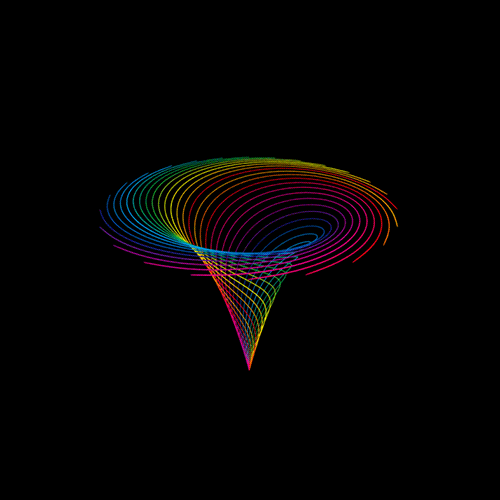
The Torus and Its Cosmic Significance: Black Holes, Galaxies, and Universal Structures
Dan Winter’s interpretation of the torus extends beyond atomic and biological systems to encompass the grand architecture of the cosmos, proposing that this geometric form underpins the structure of black holes, galaxies, and the very fabric of the universe. He suggests that the toroidal shape is not merely a local phenomenon but a universal organizing principle that governs the flow of energy and matter on cosmic scales. According to Winter, black holes are not singularities of infinite density but rather toroidal vortices that serve as gateways for energy transformation, compressing matter and information before redistributing it across space-time. This perspective aligns with certain theoretical models in astrophysics, which describe black holes as having accretion disks and polar jets that exhibit toroidal dynamics. Winter further argues that these structures function as cosmic implosion engines, where the recursive folding of gravitational and electromagnetic waves generates the immense forces necessary for galactic evolution.
Winter’s theories also extend to the structure of galaxies, where he proposes that the spiral formations of stars and interstellar matter are manifestations of toroidal energy fields. He suggests that galaxies operate as vast toroidal systems, with energy flowing inward toward the galactic core and then being expelled outward in a self-sustaining cycle. This model resonates with observations in cosmology, where researchers have identified magnetic fields and plasma currents that exhibit toroidal patterns within galaxies. Winter interprets these phenomena as evidence of a universal toroidal framework that guides the organization of cosmic structures, reinforcing the idea that the same geometric principles governing subatomic and biological systems also apply at the largest scales of existence. Furthermore, he draws parallels between the toroidal structure of galaxies and ancient cosmological models, such as the Ouroboros and mandala symbols, which depict the universe as a self-referential, recursive system.
Beyond galaxies, Winter suggests that the entire universe may function as a nested hierarchy of toroidal structures, where smaller vortices give rise to larger ones in an infinite fractal pattern. He proposes that the expansion of the universe is not a simple outward movement but a dynamic process of recursive implosion, where energy is continuously compressed and re-emitted across multiple dimensions. This perspective challenges conventional cosmological models, offering an alternative framework in which the torus serves as the fundamental mechanism for cosmic coherence, gravitational interaction, and the emergence of complex structures throughout the universe.
The Torus as a Symbol of Unity and Interconnectedness
Dan Winter’s exploration of the torus extends beyond its physical and mathematical properties into the realm of consciousness, spirituality, and the interconnectedness of all life. He posits that the toroidal structure is not only a geometric foundation of matter and energy but also a symbolic representation of unity, recursion, and the self-sustaining nature of existence. In Winter’s view, the torus embodies the principle of "wave on a wave waving," where energy continuously folds into itself, creating a self-referential system that mirrors the nature of consciousness. This perspective aligns with various spiritual traditions that describe the universe as an interconnected web of life, where all things are dynamically linked through cycles of creation, transformation, and renewal. The torus, as a self-organizing and recursive structure, serves as a metaphor for the interdependence of all phenomena, illustrating how individual systems—whether atomic, biological, or cosmic—are embedded within a larger, harmonious whole.
Winter suggests that the toroidal model offers profound insights into the nature of consciousness, particularly in relation to meditation, emotional intelligence, and spiritual awakening. He argues that when individuals experience states of deep compassion, love, or bliss, their bioelectric fields align in a toroidal pattern, creating a coherent resonance that extends beyond the self. This idea is supported by research on heart coherence, which demonstrates that emotional states such as love and gratitude can synchronize brain and heart rhythms, generating a harmonized electromagnetic field. Winter extends this concept, proposing that when multiple individuals achieve this state simultaneously, their collective energy forms a larger toroidal field, enhancing interconnectedness and facilitating collective consciousness. This perspective resonates with ancient wisdom traditions that emphasize the power of intention, prayer, and group meditation in influencing the energetic fabric of reality.
Furthermore, Winter’s toroidal model provides a framework for understanding the spiritual significance of sacred geometry, suggesting that the recursive folding of energy within the torus reflects the mechanics of enlightenment and self-realization. He interprets spiritual experiences such as lucid dreaming, astral projection, and mystical visions as manifestations of the toroidal field’s ability to compress and accelerate consciousness beyond linear perception. By aligning one’s internal energy with the recursive geometry of the torus, individuals may access higher states of awareness, dissolve the illusion of separateness, and recognize their intrinsic connection to the universe. This perspective bridges the gap between science and spirituality, offering a unified vision in which the torus serves as both a physical and metaphysical structure that underpins the fabric of existence.
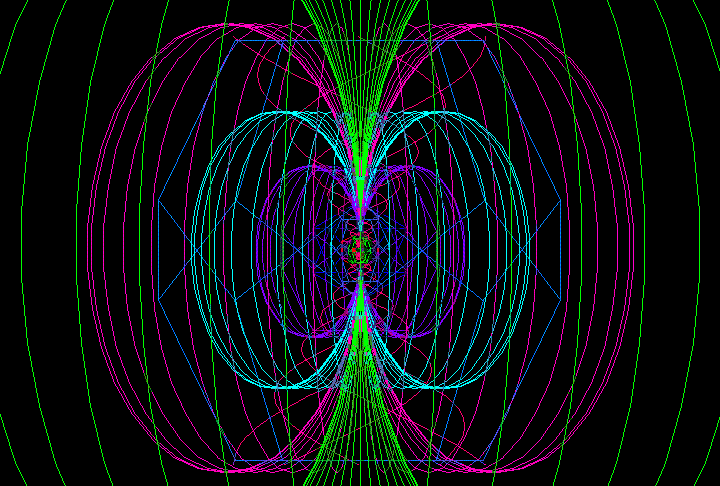
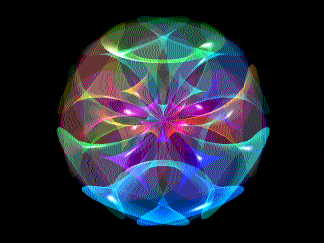
Dan Winter’s interpretation of the torus presents a compelling synthesis of physics, biology, and consciousness, positioning it as a foundational structure that governs the organization of energy and matter across multiple scales of existence. From the self-organizing dynamics of fluid motion to the recursive folding of electromagnetic waves, the torus emerges as a universal mechanism for coherence, compression, and resonance. Winter’s integration of the Golden Ratio (Phi) and sacred geometry further enriches this model, offering a framework in which fractal patterns, implosion, and harmonic interference shape both physical and biological systems. His theories extend beyond conventional scientific paradigms, suggesting that the torus is not only a geometric form but also a dynamic force that underpins gravitational effects, DNA function, and even the mechanics of consciousness. By linking these diverse phenomena through the lens of the toroidal structure, Winter proposes a unified vision of reality in which energy, matter, and awareness are intrinsically interconnected.
Despite scepticism from mainstream science, Winter’s work continues to inspire those exploring the intersections of geometry, energy, and consciousness. His theories challenge conventional models by proposing that the torus serves as a bridge between the physical and metaphysical, offering insights into the nature of life, the universe, and human experience. Future research may benefit from further investigation into the toroidal dynamics of biological systems, the role of Phi-based recursion in electromagnetic fields, and the potential applications of toroidal energy in sustainable technologies. Whether viewed as a scientific hypothesis or a philosophical framework, Winter’s vision of the torus invites a deeper exploration of the fundamental patterns that shape existence, encouraging a holistic understanding of the forces that govern both the material and energetic dimensions of reality.